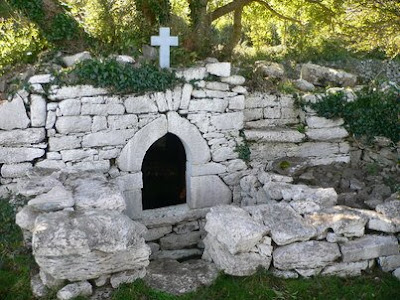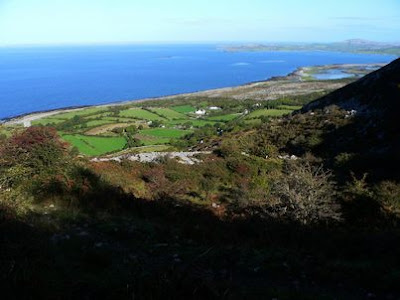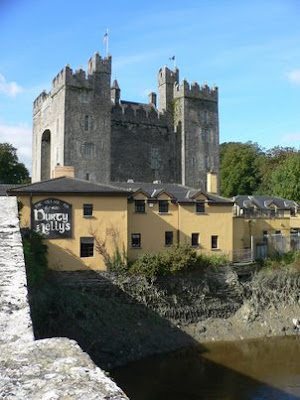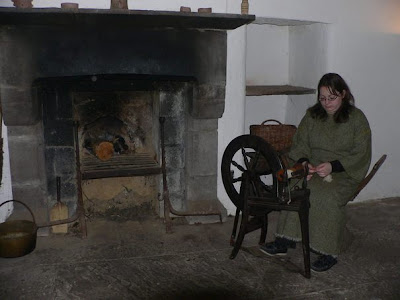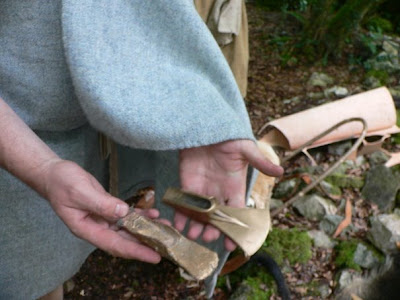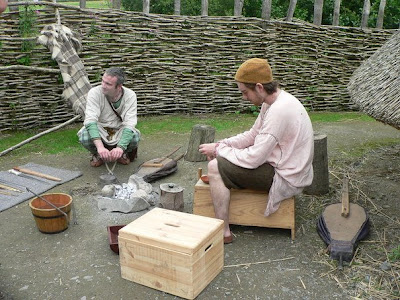The Rock of Cashel

It's not really a long way to Tipperary - at least not from County Clare, which borders County Tipperary to the east. One bright and sunny Wednesday morning after too many wet and gloomy weekends we decided to ditch work for the day and take a road trip. (Ah, the benefits of self-employment.) We drove to the Rock of Cashel in east Tipp, about 90 minutes from our cottage. The Rock of Cashel is a group of defensive and religious buildings built high on a rocky escarpment above the surrounding plain. When you first see it from about 10 miles away it looks like something out of a fairytale, or Oz.

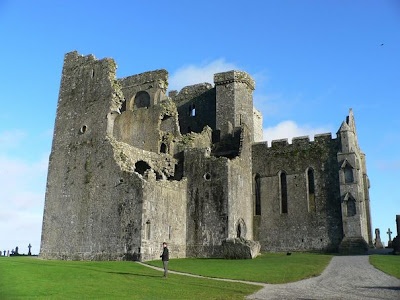
The Rock has been a strategic site since early times. The first church was founded here in the 6th century, with a Romanesque chapel and round tower added in 1127. In the 13th century a massive cathedral was added to the existing buildings, and in the 15th century an archbishops castle was built next to the cathedral. The result is a hodgepodge of massive stone buildings displaying a milleniums worth of architectural styles.

A round tower is always a sign of an early defensive site. These towers have no door at ground level. In the event of an attack, the residents (usually monks) would climb a ladder to a door 20 feet off the ground and pull the ladder up after them. I desperately wanted to climb this tower, but unfortunately we left our ladder at home.

The Romanesque chapel and Gothic cathedral were chock-full of strange and beautiful carvings. Stone heads, some lovely and other grotesque and grimacing, were hidden everywhere. It must have been a bit creepy for fearful church goers in the Middle Ages.


The Galtee Mountains
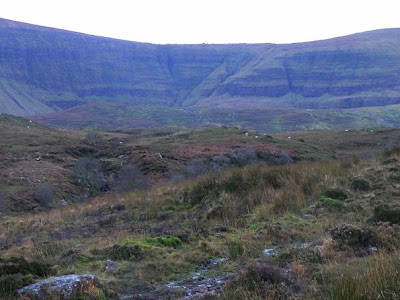
After we spent a couple of hours touring the Rock of Cashel, we drove into the nearby Galtee Mountains for a late afternoon walk. We decided to come back to this beautiful area next summer for a much longer hike.

And while we're in Tipperary, here's a funny story I heard.......
We're friends with a little old Irishman named Patsy O'Grady. He's retired from farming and now he goes out every night to listen to traditional music, which is how we met him. Patsy was expressing surprise that any American would want to live in a place as rustic as our thatched cottage. I said something about the influence of the Little House on the Prairie series of books when I was a child. Patsy replied, "Little house where?" and I started to explain about the prairies of the American midwest. "No, no," he stopped me, "I know what a prairie is. I'm just after remembering that my niece used to talk about the show, and here I always thought it was an Irish show - you know, Little House in Tipperary?"
Dromore Wood

Dromore is an old demesne (estate) that's now public land, with a castle, a lovely wood (the word is singular in the British Isles for some reason) and walking trails around a lake. It's about 20 minutes from our house and a nice place to take Sonya for a walk. This particular Sunday was misty and very atmospheric.
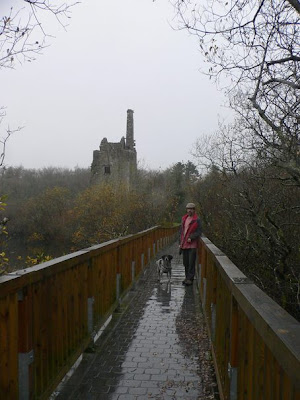

Kilbaha, West Clare
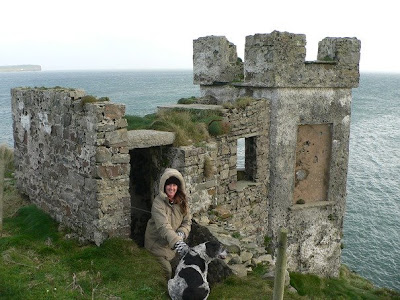
On a very different type of day we drove to the coast of West Clare. It was cold with gale force winds and crisp sunshine interrupted by fierce hail showers. As we drove into the tiny village of Kilbaha we spotted this cool little tower perched on the edge of the cliff, so we parked the car and tramped up the farm road to investigate further.
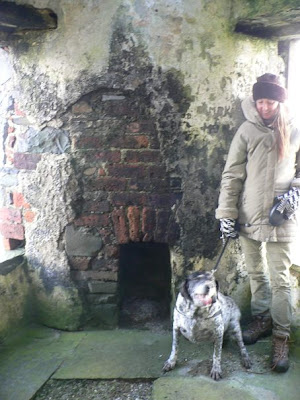
Inside the tower was a wee little fireplace and large windows looking out over the water to the east and the west. This is a strategic point where the waters of the Shannon meet the Atlantic ocean, and someone had the enviable job of sitting by a cozy fire and occasionally glancing out the windows to check for invading ships.
The view from the tower windows: To the east, the River Shannon.......
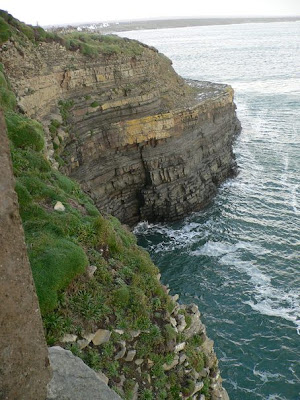
....and to the west, looking toward the Atlantic Ocean.
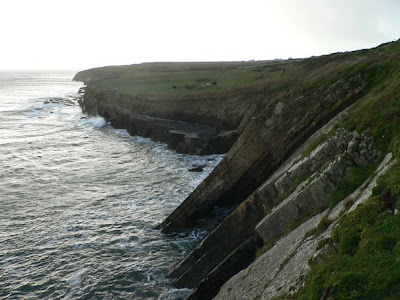

The Little Ark of Kilbaha

In the 1840's priests were allowed to say mass once again, but in the townland of Kilbaha there was no landlord that would permit a church to be built on their land. This must have been at the time when it was still illegal for Catholics to own land. For a while mass was held in a makeshift tent but it was less than ideal in the coastal winds and rain. The priest figured out that the strip of land exposed at low tide was a "no-man's-land" that wasn't owned by the local landlords. He had a little church on wheels constructed which could be wheeled to the beach at low tide for mass. The priest would say mass inside the ark while the parishoners knelt in the wet sand around it. It must have driven the landlords crazy, and it certainly increased mass attendance in Kilbaha when word of the little ark spread throughout western Ireland.
Bridges of Ross

Beyond Kilbaha, on the Atlantic side of the peninsula, are some incredible cliff formations called the Bridges of Ross. The wind was so fierce that day that the air was filled with salt spray, hail, and gobs of sea foam flying through the air. I would love to have taken a digital movie here to capture the drama of the day, but we didn't dare take the camera out for too long without a waterproof cover.

The winds can be really incredible at the western edge of Ireland, and people get blown off the cliffs with some regularity. Last spring during one extremely windy week 4 people were blown off cliffs in County Clare. Usually the wind blows from the sea but it can suddenly gust around and come from behind, catching someone unawares. We're very aware of the dangers so we practically crawled on our bellies to the edge of the cliffs for a view of the huge waves that came crashing through the stone arches. At one point we were walking on a path, well away from the cliffs, when a strong gust of wind lifted me right off my feet and toward an electric fence, but Bill grabbed my arm and yanked me back to earth just in time. By the time we got back to the car we were coated with frozen salt spray and felt like survivors of Shackleton's voyage.
How Dark Is It?
Ireland is a lot further north than NY State, so we get asked that question a lot. It starts getting light around 8 am and the sun is up by 8:45. The sun sets at 4:30 and it's full dark by 5 pm. The afternoon darkness falls about the same time as it did in NYS, but the mornings are definitely darker. This is because we are in the extreme west of the Greenwich Mean Time zone, so the sunset quite a bit later than it is in Greenwich, England.
Summer is when we get the payoff. On the summer solstice the sun comes up at 5 am and sets at 10:30 pm, with an extremely long dusk and dawn because the sun hardly dips below the horizon. It's actually dusk-like all night, and it's easy to see outside till about midnight. We had summer evenings where we were out in our garden until 11 pm because we couldn't tell how late it was. Aaah, looking forward to those long summer evenings........isn't it reassuring to know that they'll come round again?
Happy holidays everybody!





